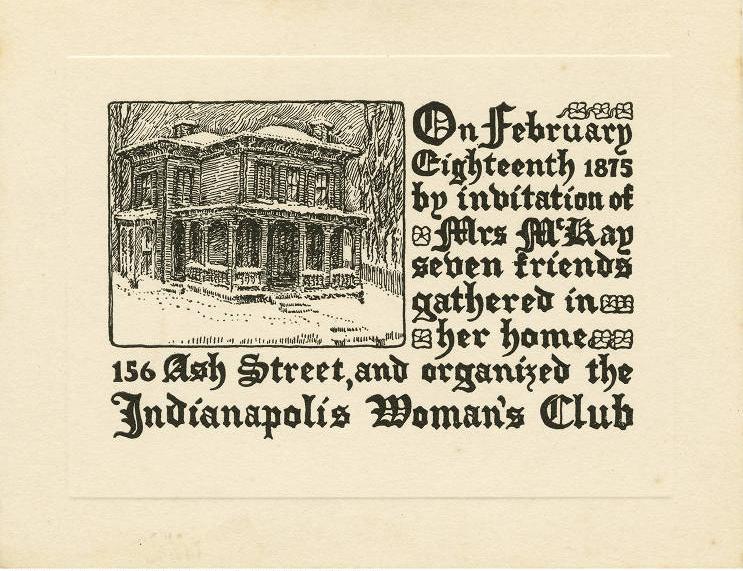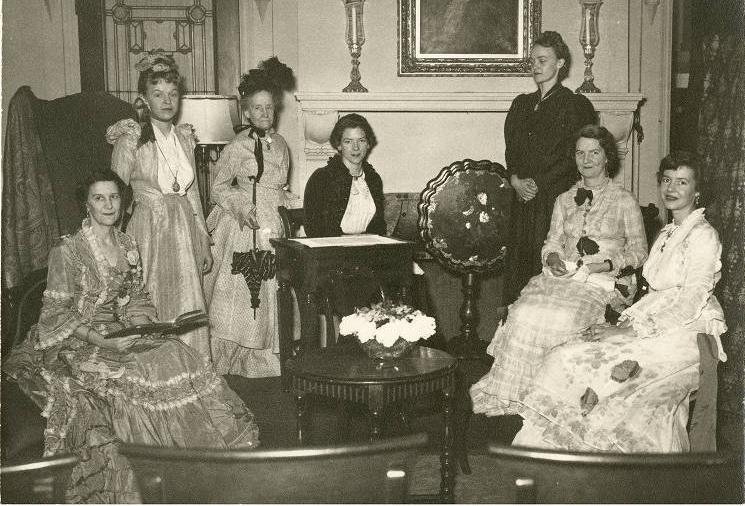The Indianapolis Woman’s Club (IWC) was founded on February 18, 1875, making it one of the oldest and longest-running clubs of its kind in the country. Its purpose was, and remains, the exchange of ideas through presentation and discussion of papers.

The first meeting of the club was at the home of Martha Nicholson McKay and was attended by 12 socially prominent Indianapolis women, including , Eliza T. Clark, and . They were well-educated women who wanted to expand their interests beyond home and family.
The club met in members’ homes until—like many similar organizations–it became large enough to need a more spacious venue. In 1888, Sewall and other women founded the as a stock company. Part of its mission was to provide meeting space for Indianapolis clubs and organizations, including the IWC. The original Propylaeum building at 17 East North Street, completed in 1891, served as meeting space for IWC until 1923 when the Propylaeum acquired a residence at 1410 North Delaware Street as its new home. The original building was demolished to make way for the construction of the .

Topics of presented papers range widely, from domestic life to literature, history, and current events. Many members also were published authors; notably early members McKay, Blanche Stillson, and .
Club members also dedicated themselves to causes, such as supporting the war effort during both world wars. As member Margaret Booth Jameson wrote, the club’s “treasury was opened for every worthy demand,” including Liberty Bonds, the Red Cross, and the plight of French war orphans. The most significant sacrifice by club women during the wars was seeing family members off to serve their country.
The most progressive aspect of the early club was that it offered women the opportunity to enjoy social interaction and intellectual activity outside the home. This was an outlet that, while long available to men, had been denied to women. The diversity of the club’s membership has widened substantially over the years, but it remains a venue for stimulating social and intellectual exchange.

Help improve this entry
Contribute information, offer corrections, suggest images.
You can also recommend new entries related to this topic.